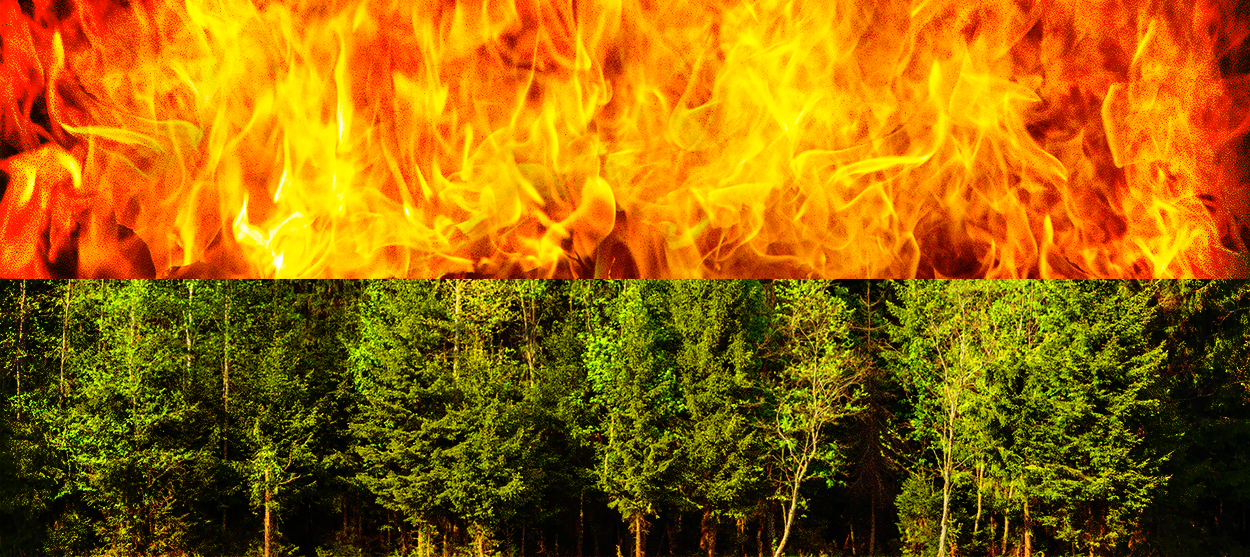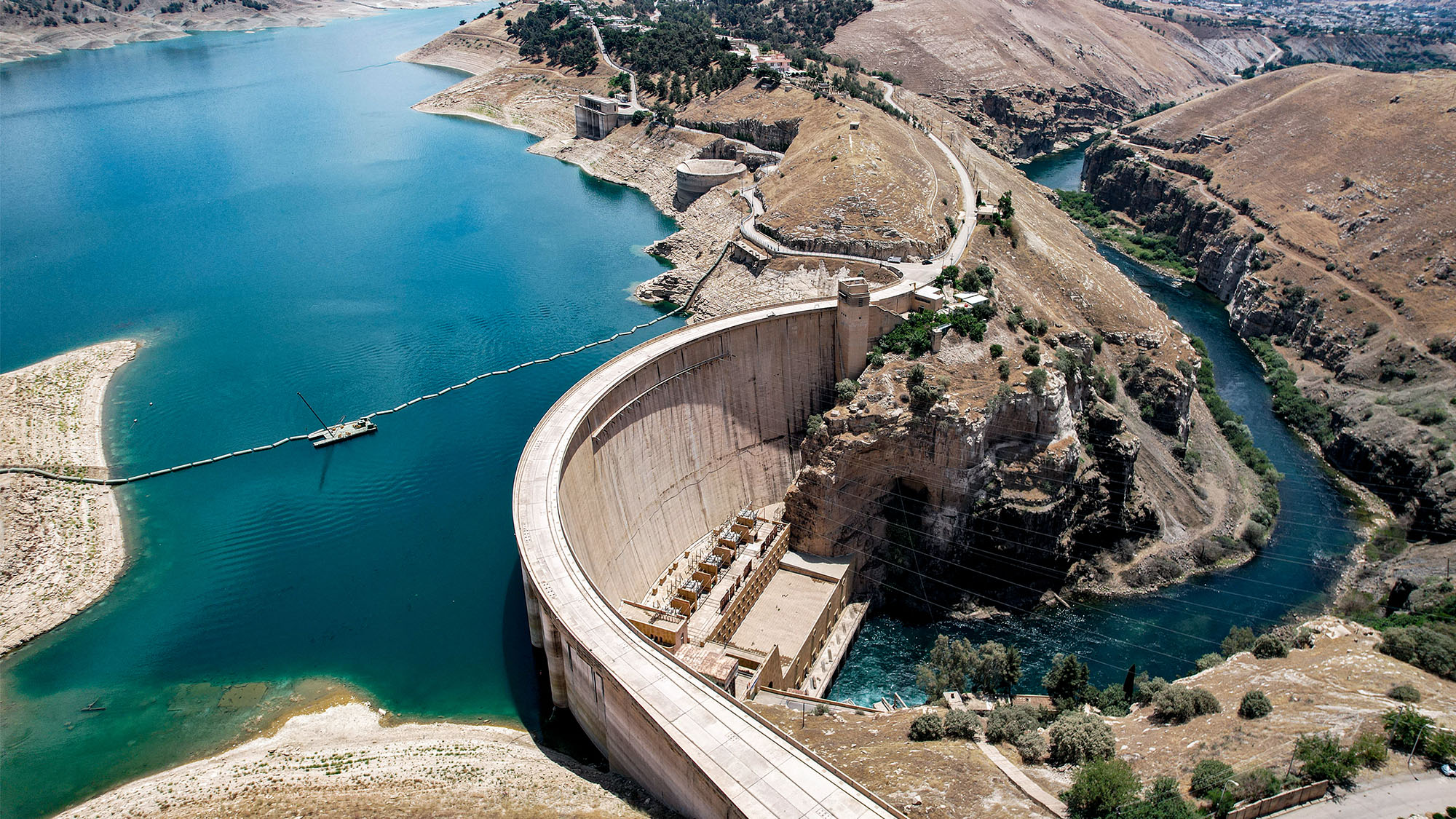There's a big problem with the tree-planting climate strategy
New research shows why using forests as emissions offsets is likely to backfire


Can we stop climate change by planting trees? President Trump seems to think so — he endorsed the idea of planting one trillion trees around the world at the Davos forum in Switzerland in January, apparently on the advice of billionaire Marc Benioff.
It's unclear whether this trillion-tree initiative is going anywhere. But the general idea is just part of a developing climate policy strategy based on forests. Corporations, countries, and some U.S. states have begun working up systems that would take up carbon from the atmosphere, usually through a market system allowing companies to purchase offsets for their emissions in the form of trees.
However, as a new Science paper by University of Utah climate scientist William Anderegg and several other authors shows in detail, the offset model is likely to backfire and make climate change worse. Forests can and should be part of climate policy — but only if the best science is carefully taken into consideration, something that is unlikely to happen along the current track.
The Week
Escape your echo chamber. Get the facts behind the news, plus analysis from multiple perspectives.

Sign up for The Week's Free Newsletters
From our morning news briefing to a weekly Good News Newsletter, get the best of The Week delivered directly to your inbox.
From our morning news briefing to a weekly Good News Newsletter, get the best of The Week delivered directly to your inbox.
Let me start with the idea of carbon offsets. These are simply some mechanism where an entity takes some action to compensate for its greenhouse gas emissions. California, for instance, has a cap-and-trade emissions market system that allows people to purchase or sell carbon credits. An airline might buy credits to compensate for the emissions of its planes — from farmers who capture their methane emissions, or landowners in proportion to the amount of carbon their forests are estimated to take up out of the atmosphere, typically over the next 100 years.
As the study outlines, any kind of forest offset is fraught with fundamental problems. Most importantly by far, climate change itself poses a dire threat to forests around the world, for several reasons. First is increased fire, which has been seen around the world thanks to climate change, notably in California, Australia, and Russia. Second is drought, also closely linked to climate change (indeed, the Southwest U.S. has seen the worst drought since the 1500s thanks to warming), and predicted to get worse the more warming increases. Third is "biotic agents" like beetle infestations — pine bark beetles, for instance, have devastated forests across the American West and Canada in part because winters are no longer reliably cold enough to kill them off. Fourth, general climate disruptions — stuff like extreme weather, rising oceans, or changes in the biosphere — can obliterate forests. Finally, human activities like logging or clearing forest for farmland must of course be taken into account.
Every one of these dangers raises the chance that these forest offsets will not pan out. If some company buys an emission credit in the form of a forest that ends up burning down, or being devoured by pests, or dying of drought, the carbon will come right back out into the atmosphere. "As investments go, these are very risky," Anderegg told The Week in an interview. California, as one example, does not explicitly take climate risks into account in its offsets system, but they do have a general risk "buffer pool" containing about 8-10 percent extra offsets for the dangers mentioned above. That is not even close to big enough. For wildfires alone, the 100-year forest risk has increased from about 4 percent from 1984-2000 to about 8 percent from 2001-2017. The risk is higher in western states — especially California — that are more vulnerable to drought, and will increase dramatically in coming years as the climate continues to warm.
What's more, forest offsets also suffer the cheating and measurement problems that are often seen when trying to use markets to achieve social objectives (see also ObamaCare). Experts use the term "leakage" to refer to when a forest offset merely redirects emissions rather than actually reducing them — for instance, moving timber harvesting from one area to another. A policy brief from the UC Berkeley's Center for Environmental Public Policy examined four-fifths of California's emissions credits, and found that, in that portion of the credit pool, emissions leakage may have reduced the actual amount of emissions reductions by a whopping 82 percent.
A free daily email with the biggest news stories of the day – and the best features from TheWeek.com
Lastly, one must take into account that forests are both their own ecosystem and part of the overall biosphere. The offset system tends to incentivize industrial forests — huge monoculture tree farms that are cheaper to plant, but both provide fewer ecological benefits and are more vulnerable to pests or fire. Forests are also often home to people, like indigenous tribes in the Amazon basin or northern Canada, whose needs should be taken into account. Meanwhile, where forests fit into the broader world ecology matters a lot. For instance, a recent Science paper finding enormous climate benefits for planting trees in northern latitudes was panned by climate scientists for failing to consider (among many other things) the fact that forests in those locations would reduce the earth's reflectivity, canceling out the climate benefit.
Now, forest policy can be a large part of an attack on climate change, but the current model relies far too much on janky market mechanisms and wishful thinking about the future. Offsets get governments and private companies excited because they suggest a possibility that nothing much would have to change to fight climate change. But as we have seen, the concrete emissions reductions are almost certainly overstated, by a lot. Rather than balancing current emissions with offsets that may or may not happen over the next 100 years, the focus should be on cutting emissions now, as fast as possible. "The further you get from offsets and the closer to reductions as such, the better," says Anderegg. As I have written elsewhere, that would mean huge and sustained cuts in the use of carbon fuels, a crash build-out of zero-carbon energy, decarbonization of transportation, manufacturing, and agriculture, big subsidies for electric vehicles (particularly bicycles), and so forth.
By the same token, climate policy on forests requires careful and constantly updated reference to the best science — to measure the potential and the actual amount of carbon uptake, the future risks of forest loss, the amount of leakage, interactions with the rest of the climate system, and possible negative effects on existing human communities. In particular, preservation of existing forest (as opposed to planting more) deserves high priority. According to the Intergovernmental Panel on Climate Change, land use changes produce about 5.2 billion metric tons of carbon dioxide annually, mostly from deforestation. That is mostly thanks to clearing land for crops or pasture, or logging, or other industrial uses like palm oil plantations (which are a climate nightmare, incidentally). But conversely, preventing deforestation is perhaps the easiest and most broadly beneficial climate strategy available.
It is generally wiser to simply protect and manage forests directly as wilderness lands rather than tying them into a marketplace for carbon offsets that shows little sign of ever working.
Want more essential commentary and analysis like this delivered straight to your inbox? Sign up for The Week's "Today's best articles" newsletter here.
Ryan Cooper is a national correspondent at TheWeek.com. His work has appeared in the Washington Monthly, The New Republic, and the Washington Post.
-
 Quiz of The Week: 29 November – 5 December
Quiz of The Week: 29 November – 5 DecemberQuiz Have you been paying attention to The Week’s news?
-
 The week’s best photos
The week’s best photosIn Pictures A drive in the desert, prayers with pigeons, and more
-
 The Week Unwrapped: Will drought fuel global violence?
The Week Unwrapped: Will drought fuel global violence?Podcast Plus why did Trump pardon a drug-trafficking president? And are romantic comedies in terminal decline?
-
 Has Zohran Mamdani shown the Democrats how to win again?
Has Zohran Mamdani shown the Democrats how to win again?Today’s Big Question New York City mayoral election touted as victory for left-wing populists but moderate centrist wins elsewhere present more complex path for Democratic Party
-
 Millions turn out for anti-Trump ‘No Kings’ rallies
Millions turn out for anti-Trump ‘No Kings’ ralliesSpeed Read An estimated 7 million people participated, 2 million more than at the first ‘No Kings’ protest in June
-
 Ghislaine Maxwell: angling for a Trump pardon
Ghislaine Maxwell: angling for a Trump pardonTalking Point Convicted sex trafficker's testimony could shed new light on president's links to Jeffrey Epstein
-
 The last words and final moments of 40 presidents
The last words and final moments of 40 presidentsThe Explainer Some are eloquent quotes worthy of the holders of the highest office in the nation, and others... aren't
-
 The JFK files: the truth at last?
The JFK files: the truth at last?In The Spotlight More than 64,000 previously classified documents relating the 1963 assassination of John F. Kennedy have been released by the Trump administration
-
 'Seriously, not literally': how should the world take Donald Trump?
'Seriously, not literally': how should the world take Donald Trump?Today's big question White House rhetoric and reality look likely to become increasingly blurred
-
 Will Trump's 'madman' strategy pay off?
Will Trump's 'madman' strategy pay off?Today's Big Question Incoming US president likes to seem unpredictable but, this time round, world leaders could be wise to his playbook
-
 Democrats vs. Republicans: who are US billionaires backing?
Democrats vs. Republicans: who are US billionaires backing?The Explainer Younger tech titans join 'boys' club throwing money and support' behind President Trump, while older plutocrats quietly rebuke new administration
